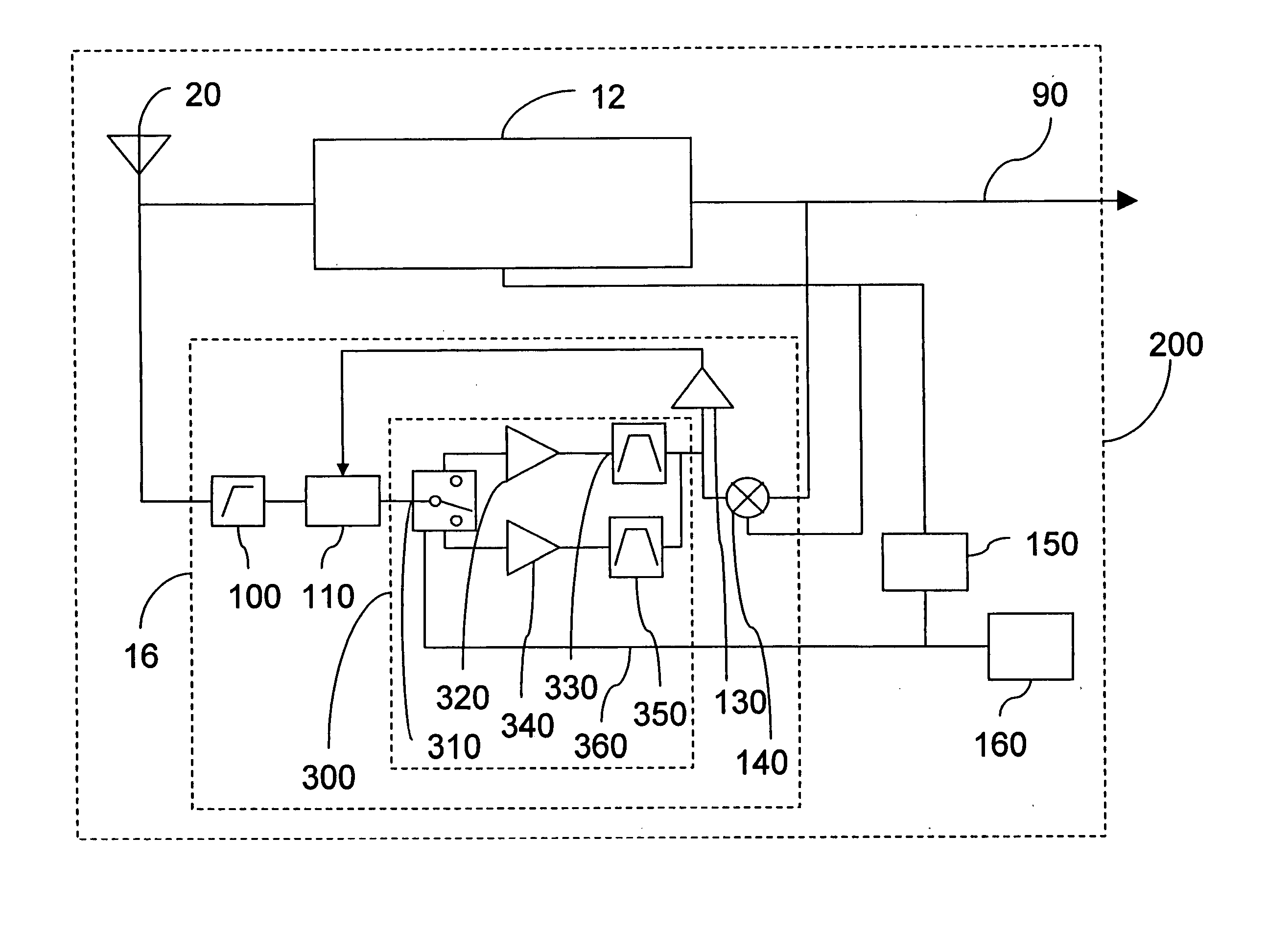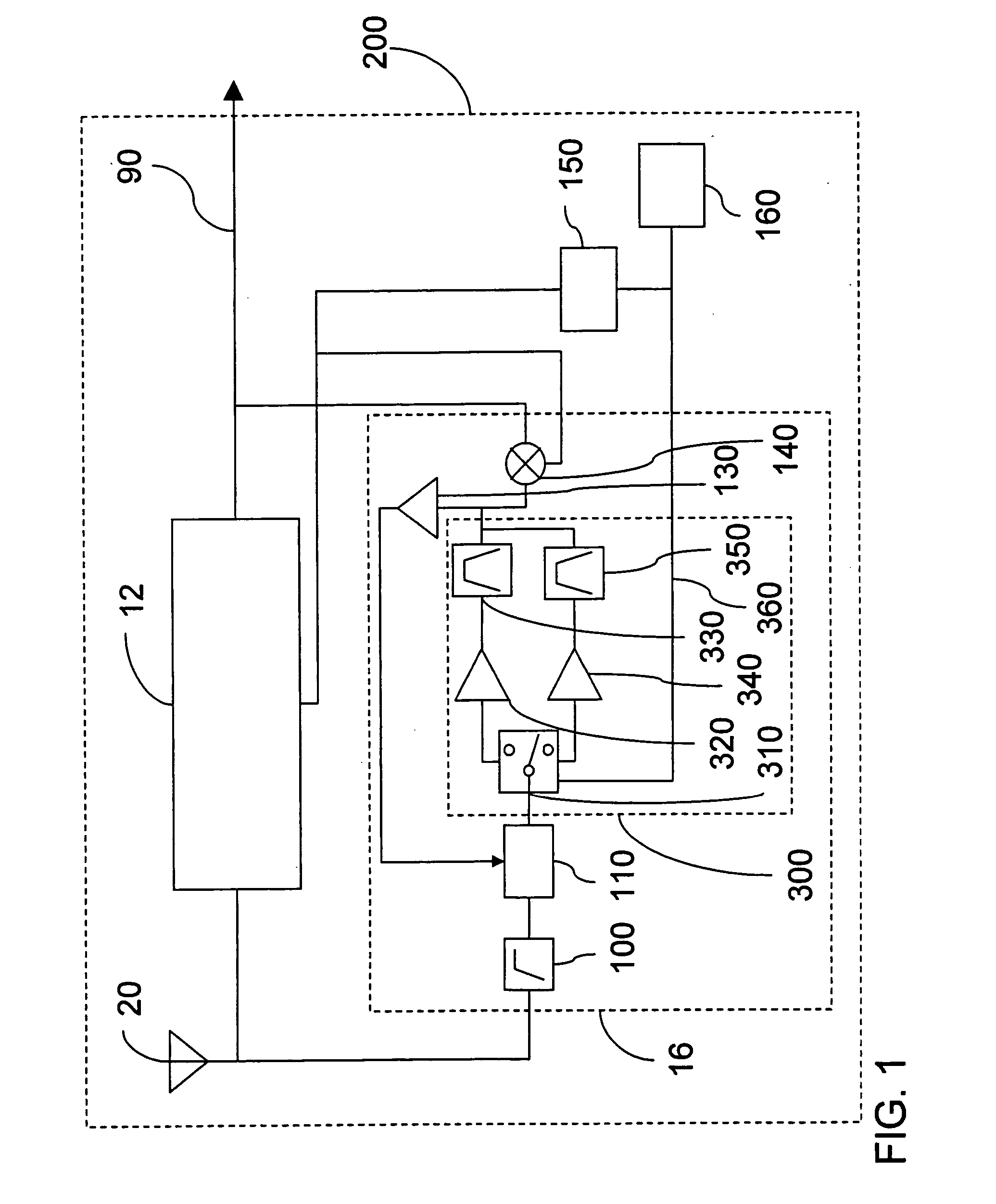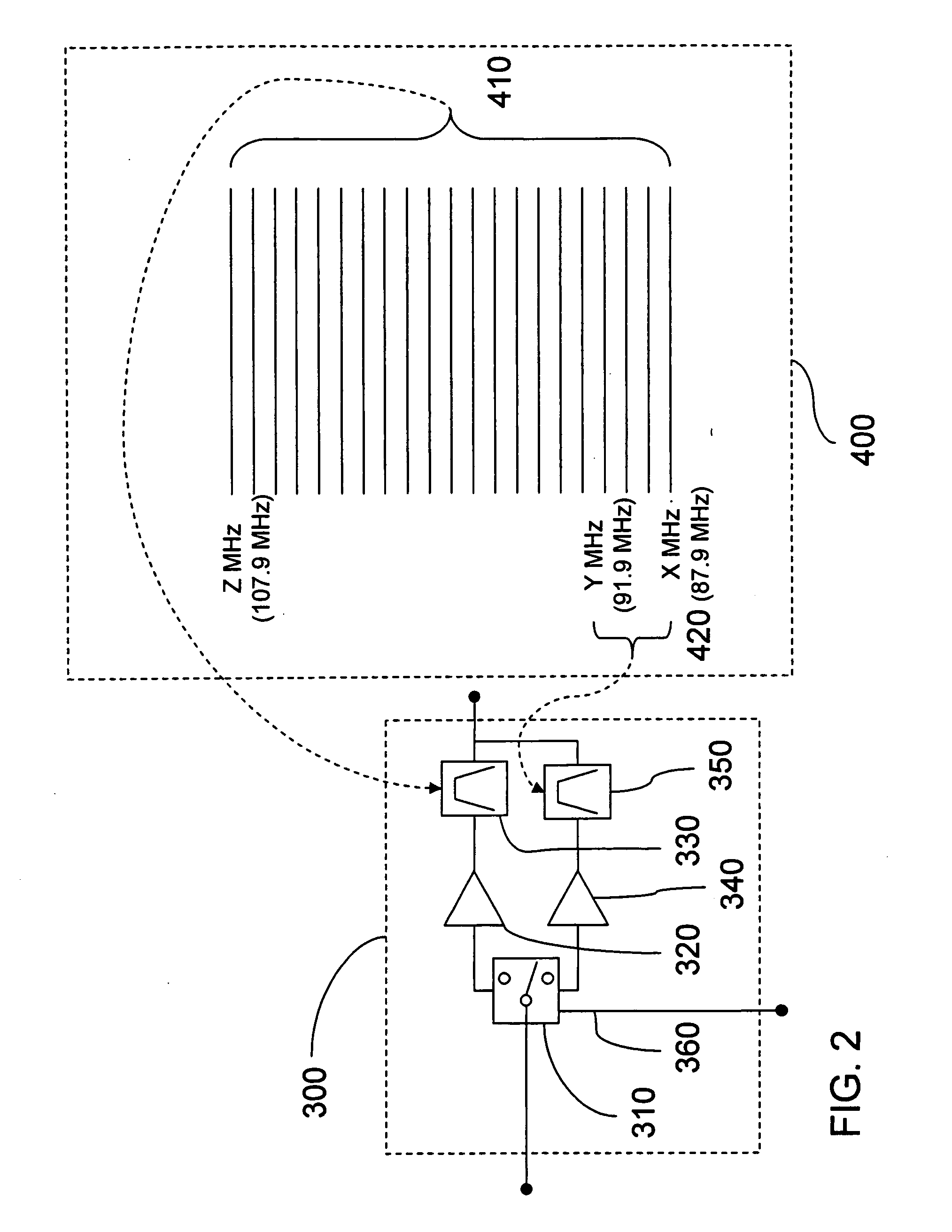Radio receiver and reserved band filter
a radio receiver and reserved band technology, applied in the direction of electrical equipment, transmission, etc., can solve the problems of high cost of high power fm radio transmission, many low power fm radio stations using reserved bands are often overpowered by commercial stations, and have reception problems, so as to improve the reception of radio signals, and improve the effect of radio signal reception
- Summary
- Abstract
- Description
- Claims
- Application Information
AI Technical Summary
Benefits of technology
Problems solved by technology
Method used
Image
Examples
Embodiment Construction
[0029]FIG. 1 shows one embodiment of the present invention, particularly adapted for operation in the U.S. Specifically, FIG. 1 shows a block diagram of a front end of an AM / FM radio RF receiver 200. The front end of the radio receiver 200 may comprise a signal input 20 connected to an AM receiver circuit 12 and an FM receiver circuit 16. The FM receiver circuit 16 may comprise the following features: an FM band high pass filter 100 connected to the signal input 20, an FM PIN diode detector 110 connected to the FM band high pass filter 100, a filter circuit 300 connected to the FM PIN diode detector 110, an FM amplifier 130 connected to the filter circuit 300, where the FM amplifier may also be connected to the FM PIN diode detector 110 in a feedback loop, and an FM mixer 140 connected to the filter circuit 300. An IF output 90 may be connected to the AM receiver circuit 12 and the FM receiver circuit 16. Also, a voltage controlled oscillator (VCO) 150 may be connected to the AM rec...
PUM
 Login to View More
Login to View More Abstract
Description
Claims
Application Information
 Login to View More
Login to View More - R&D
- Intellectual Property
- Life Sciences
- Materials
- Tech Scout
- Unparalleled Data Quality
- Higher Quality Content
- 60% Fewer Hallucinations
Browse by: Latest US Patents, China's latest patents, Technical Efficacy Thesaurus, Application Domain, Technology Topic, Popular Technical Reports.
© 2025 PatSnap. All rights reserved.Legal|Privacy policy|Modern Slavery Act Transparency Statement|Sitemap|About US| Contact US: help@patsnap.com



